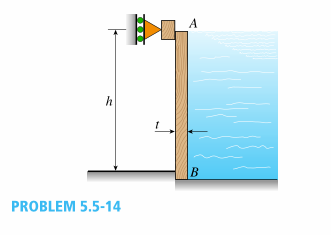Part Ⅱ Reading Comprehension (Skimming and Scanning)Directions: In this part, you will hav
Part Ⅱ Reading Comprehension (Skimming and Scanning)
Directions: In this part, you will have 15 minutes to go over the passage quickly and answer the questions on Answer Sheet 1. For questions 1-7, choose the best answer from the four choices marked [A], [B], [C] and [D]. For questions 8-10, complete the sentences with the information given in the passage.
Hydroelectric Power
Hydroelectric power is America's leading renewable energy resource. Of all the renewable power sources, it's the most reliable, efficient and economical. Water is needed to run a hydroelectric generating unit. It's held in a reservoir or lake behind a dam, and the force of the water being released from the reservoir through the dam spins the blades of a turbine. The turbine is connected to the generator that produces electricity. After passing through the turbine, the water re-enters the river on the downstream side of the dam.
Hydroelectric plants convert the kinetic energy within falling water into electricity. The energy in moving water is produced in the sun, and consequently is continually being renewed. The energy in sunlight evaporates water from the seas and deposits it on land as rain. Land elevation differences result in rainfall runoff, and permit some of the original solar energy to be harnessed as hydroelectric power. Hydroelectric power is at present the earth's chief renewable electricity source, generating 6% of global energy and about 15% of worldwide electricity. Hydroelectric power in Canada is plentiful and provides 60% of their electrical requirements. Usually regarded as an inexpensive and clean source of electricity, most big hydroelectric projects being planned today are facing a great deal of hostility from environmental groups and local people.
The earliest recorded use of water power was a clock, constructed around 250 BC. Since then, people have used falling water to supply power for grain and saw mills, as well as a host of other uses. The earliest use of flowing water to generate electricity was a waterwheel on the Fox River in Wisconsin in 1882.
The first hydroelectric power plants were much more dependable and efficient than the plants of the day that were fired by fossil fuels. This led to a rise in number of small to medium sized hydroelectric generating plants located wherever there was an adequate supply of falling water and a need for electricity. As demand for electricity soared in the middle years of the 20th century, and the effectiveness of coal and oil power plants improved, small hydro plants became less popular. The majority of new hydroelectric developments were focused on giant mega-projects.
Hydroelectric plants harness energy by passing flowing water through a turbine. The water turbine rotation is delivered to a generator, which generates electricity. The quantity of electricity that can be produced at a hydroelectric plant relies upon two variables. These variables are (1) the vertical distance that the water falls, called the "head", and (2) the flow rate, calculated as volume over time. The amount of electricity that is produced is thus proportional to the head product and the flow rate.
So, hydroelectric power stations can normally be separated into two kinds. The most widespread are "high head" plants and usually employ a dam to stock up water at an increased height. They also store water at times of rain and discharge it during dry times. This results in reliable and consistent electricity generation, capable of meeting demand since flow can be rapidly altered. At times of excess electrical system capacity, usually available at night, these plants can also pump water from one reservoir to another at a greater height. When there is peak electrical demand, the higher reservoir releases water throu
A.6%.
B.9%.
C.15%.
D.60%.
 题目内容
(请给出正确答案)
题目内容
(请给出正确答案)
 in the beams, assuming that the weight density of water is
in the beams, assuming that the weight density of water is .
.

 如搜索结果不匹配,请
如搜索结果不匹配,请 



















